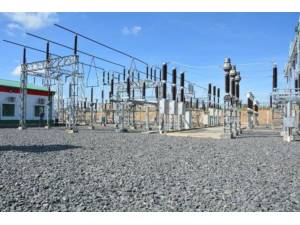
North Eastern Kenya has finally been connected to the Country’s power grid after the Kenya Electricity Transmission Company Limited (KETRACO) energized its Garissa substation yesterday afternoon. This energization of the Garissa 132/11kV and 132/33kV transformers and bay equipment comes after years of the county relying on diesel generators.
This translates to the region experiencing significantly fewer power outages leading to business growth. Economic opportunities such as the setting up of slaughterhouses and processing factories are now a reality. This will see animals and animal products processed within the county, refrigerated and supplied to other parts of the country rather than transporting livestock to Nairobi for slaughter.
The Garissa Sub-station is part of KETRACO’s Kindaruma-Mwingi-Garissa project which started in July 2012 and launched on 22nd March, 2014. This project falls under the Kenya Electricity Expansion Project; a sub-set of the government’s electricity scale- up program and is funded by the World Bank at a cost of 8.22 million dollars. The contractor for the sub-station is M/S KEC International from India while the consultant is ELC Electoconsult PSA from Italy.
Spanning 234 km, the 132kV project also comprises of a substation in Mwingi, which was energized in December last year, and the Kindaruma substation which underwent extension works to accommodate the off-take of generated electricity. Already Mwingi is enjoying reduced power outages.
During an interview with the Company’s Managing Director, FCPA Fernandes Barasa, he stated that, “Garissa substation is very important because high voltage power, which is efficient, reliable and quality power, will translate to open doors for investors from all over the world. Industries and factories should now operate with minimum disruptions. The benefits go beyond the large factories. Even the small mwananchi can now put up salons and barber shops, bakeries and alike due to the power we will transmit. Garissa town should be the business hub of Northern Kenya.”
FCPA Barasa also added that, “Currently, the diesel powered generators are producing less than 10MW while the capacity for the new transmission line is 80MW which will translate to 8 times the current supply.”
Currently, the cost of thermal (diesel) power is Ksh 20 per kWh. This is quite costly when compared to Ksh 3 per kWh for hydro-power, the cheapest power, which will be transmitted from Kindaruma Dam, through Mwingi, to North Eastern.
It is projected that this new power hub will in the near future benefit from the setup of solar and wind power plants. KETRACO plans to have the region connected onwards to Wajir and from Garsen. Garsen substation is part of the Rabai-Malindi-Garsen-Lamu transmission line, a project that the Company also plans to commission later in the month. This project brings power to Lamu, and the LAPSETT port, also putting an end to the reliance of generators in the Coastal region.
Currently, KETRACO is implementing a number of high priority projects totaling about 5,000km of transmission lines and regional power interconnectors of different voltage levels expected to be completed in the next 3-4 years. These transmission infrastructure projects will facilitate electricity evacuation from generating stations, reinforce the grid network for increased capacity, reliability and provide redundancy